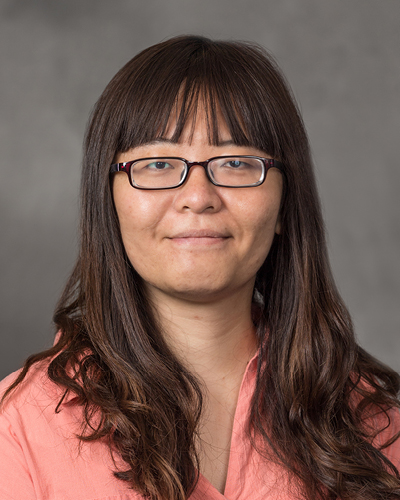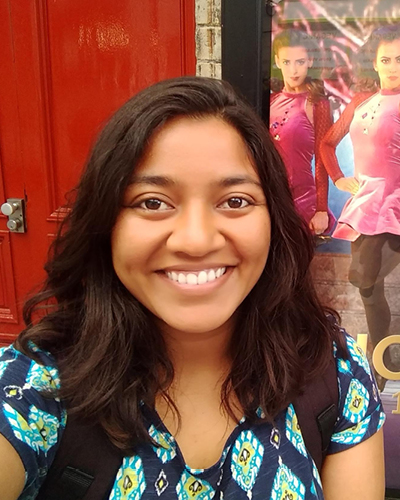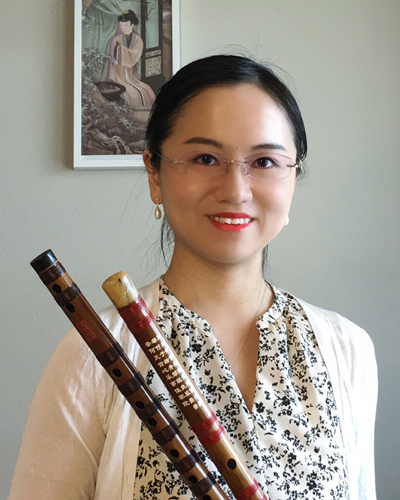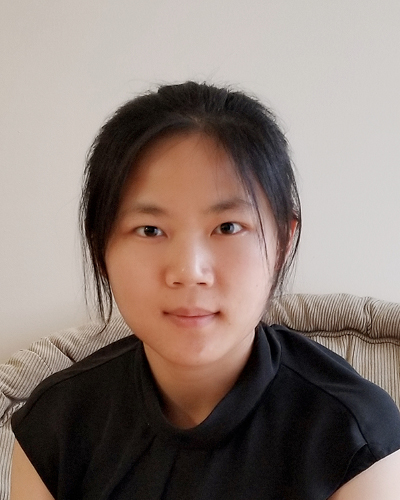We are proud to announce the 2020-21 cohort of Barbour Scholars. These five women join hundreds of alumnae, spanning more than a century, who have traveled to Ann Arbor in pursuit of a graduate education. This award commemorates Levi Barbour’s legacy of global engagement and opportunity at the University of Michigan.
These women bring a myriad of research interests to the community and share a high level of excellence in their work. Their academic endeavors cover a breadth of topics from preterm birth and infant mortality to a better understanding of how we compose and perceive language.
The Rackham Graduate School welcomes the following students into the prestigious Barbour community:

Pahriya Ashrap
Ph.D. Candidate, Environmental Health Sciences
Preterm birth is a significant public health concern as a leading cause of infant mortality. Understanding how environmental chemicals impact preterm birth and identifying modifiable risk factors could have huge public health impact as it potentially leads to contaminant remediation strategies and eventually a reduction in preterm birth rates. This is particularly important in areas where the environmental contaminants are at a higher concentration and populations are at higher risk. Ashrap is investigating the effects of essential and non-essential metal mixtures to identify which specific elements are related to preterm birth.

Chia-Wen Lo
Ph.D. Candidate, Linguistics
Chia-Wen Lo is interested in how mental structures and computations are used in understanding words and sentences. It is known that human language has the unique characteristic where we can create infinite and novel phrases or sentences; this stems from the ability of composition. Specifically, composition is not merely combining any elements at random, but rather, it involves us following syntactic rules and building well-formed structures incrementally. Lo’s dissertation investigates how compositional processes are carried out by low-frequency neural oscillations, which have been recently correlated with the processing of hierarchical structures. Her dissertation will advance our knowledge of the cognitive function of neural oscillations and offer a unified account for cortical tracking of the integration of syntactic and semantic information.

Shruti Paranjape
Ph.D. Candidate, Physics
A model describing the physics of our universe must consist of two basic components: a spectrum of particles and a set of interactions between them. Experimentally, one can probe these aspects of a model via particle scattering processes. The probability associated with each scattering process is fixed by its scattering amplitude. A modern approach to scattering amplitudes exploits symmetries and other properties of the theory to streamline calculations. The central goal of Paranjape’s dissertation is understanding to what extent one can determine amplitudes using symmetry principles alone and what amplitudes can reveal about the symmetries of underlying theories.

Yihui Sheng
Ph.D. Candidate, Asian Languages and Cultures
Yihui Sheng’s dissertation explores the relations amongst literary texts, musical sound, and performance space of chuanqi in late Ming and early Qing China, from around 1550 to 1710. Chuanqi designates a dramatic genre comprising dialogues, arias, and role types and is enacted in various theatrical traditions. In developing an interdisciplinary methodology that draws attention to performance aspects of chuanqi in addition to literary analyses, Sheng’s project aspires to excavate new understandings of not only drama and theater, but also of media and technology in the late Ming and early Qing period.

Yuxin Wang
Ph.D. Candidate, Mathematics
Yuxin Wang studies partial differential equations (PDE), and more specifically, water wave equations with freely evolving surfaces. The high nonlinearity and singularity of the equations have posed a tremendous challenge in the understanding of the evolution of waves. Therefore, she aims at finding a stable numerical method—one that can handle the singularity of an angled crest—to simulate the evolution of the wave surface. She investigates the fundamental structure of the equation and designs a numerical scheme to tackle the singularity. Her research also adds to the Harmonic Analysis toolbox, which is the major machinery to obtain energy bound in analytic PDE research.

